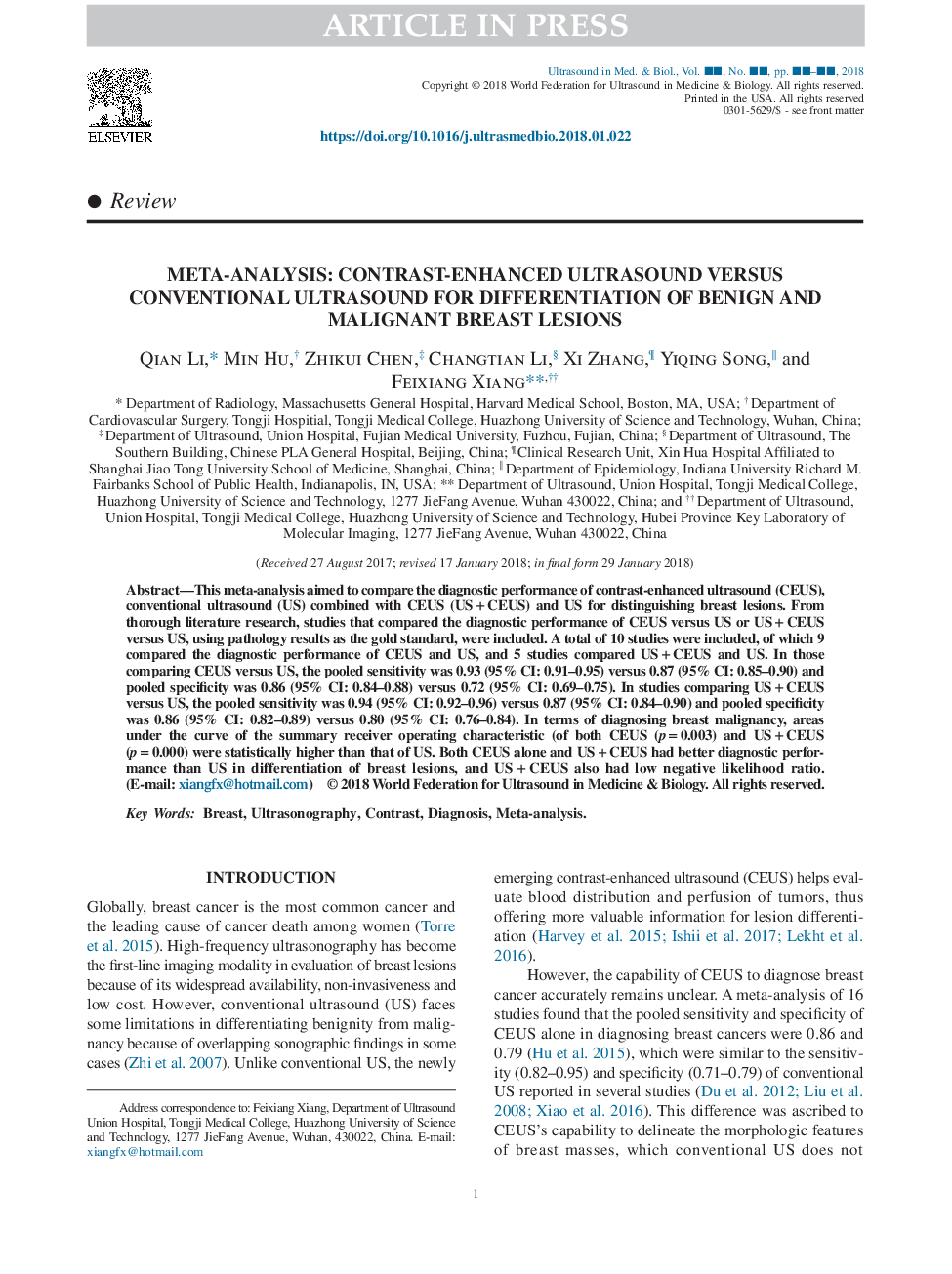| Article ID | Journal | Published Year | Pages | File Type |
|---|---|---|---|---|
| 8131132 | Ultrasound in Medicine & Biology | 2018 | 11 Pages |
Abstract
This meta-analysis aimed to compare the diagnostic performance of contrast-enhanced ultrasound (CEUS), conventional ultrasound (US) combined with CEUS (USâ+âCEUS) and US for distinguishing breast lesions. From thorough literature research, studies that compared the diagnostic performance of CEUS versus US or USâ+âCEUS versus US, using pathology results as the gold standard, were included. A total of 10 studies were included, of which 9 compared the diagnostic performance of CEUS and US, and 5 studies compared USâ+âCEUS and US. In those comparing CEUS versus US, the pooled sensitivity was 0.93 (95% CI: 0.91-0.95) versus 0.87 (95% CI: 0.85-0.90) and pooled specificity was 0.86 (95% CI: 0.84-0.88) versus 0.72 (95% CI: 0.69-0.75). In studies comparing USâ+âCEUS versus US, the pooled sensitivity was 0.94 (95% CI: 0.92-0.96) versus 0.87 (95% CI: 0.84-0.90) and pooled specificity was 0.86 (95% CI: 0.82-0.89) versus 0.80 (95% CI: 0.76-0.84). In terms of diagnosing breast malignancy, areas under the curve of the summary receiver operating characteristic (of both CEUS (pâ=â0.003) and USâ+âCEUS (pâ=â0.000) were statistically higher than that of US. Both CEUS alone and USâ+âCEUS had better diagnostic performance than US in differentiation of breast lesions, and USâ+âCEUS also had low negative likelihood ratio.
Related Topics
Physical Sciences and Engineering
Physics and Astronomy
Acoustics and Ultrasonics
Authors
Qian Li, Min Hu, Zhikui Chen, Changtian Li, Xi Zhang, Yiqing Song, Feixiang Xiang,
